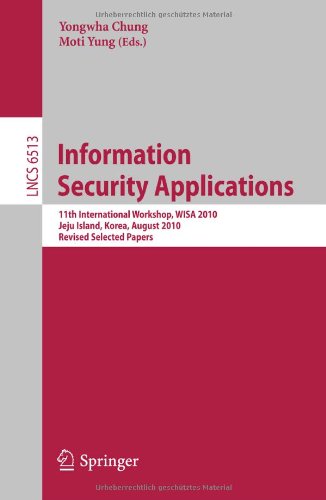

Most ebook files are in PDF format, so you can easily read them using various software such as Foxit Reader or directly on the Google Chrome browser.
Some ebook files are released by publishers in other formats such as .awz, .mobi, .epub, .fb2, etc. You may need to install specific software to read these formats on mobile/PC, such as Calibre.
Please read the tutorial at this link: https://ebookbell.com/faq
We offer FREE conversion to the popular formats you request; however, this may take some time. Therefore, right after payment, please email us, and we will try to provide the service as quickly as possible.
For some exceptional file formats or broken links (if any), please refrain from opening any disputes. Instead, email us first, and we will try to assist within a maximum of 6 hours.
EbookBell Team

4.3
48 reviews
ISBN 10: 364217955X
ISBN 13: 9783642179556
Author: Yongwha Chung; Moti Yung
This book constitutes the refereed proceedings of the 11th International Workshop on Information Security Applications, WISA 2010, held in Jeju Island, Korea, in August 2010. The 25 revised full papers presented were carefully reviewed and selected from 107 submissions. The papers are organized in topical sections on cryptosystem, implementation, mobile security/secure coding, attack, biometrics, and secure protocol.
social security application international students
international security after 9/11
information security and intelligence
information 9/11
information security architect interview questions
Tags: Yongwha Chung, Moti Yung, Information, Applications, Workshop